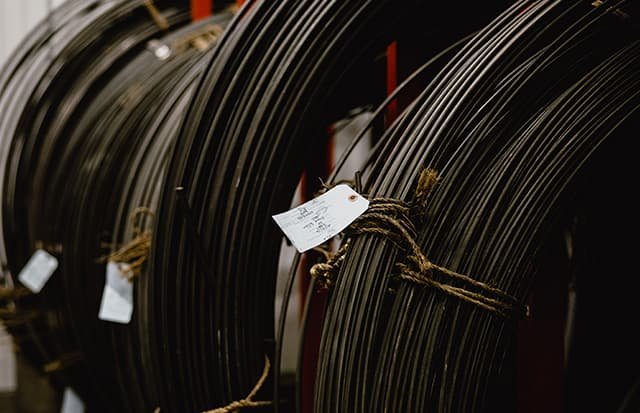Springs are used in countless applications to exert force, control motion, and support loads in mechanical systems. The performance, longevity, and suitability of a spring are heavily influenced by the material from which it is made, making material science an essential aspect of spring design and manufacturing. This article will explore several materials used to make springs, discussing their properties, advantages, and typical applications.
Understanding Spring Materials
When selecting materials for springs, designers must consider a variety of factors, including mechanical stress, environmental conditions, and cost-effectiveness. Here are some of the most common materials used:
- High-Carbon Steel (Spring Steel)
Properties: High-carbon steel, also known as spring steel, has high tensile strength and good fatigue life, which makes it ideal for high-stress applications.
Applications: Used extensively in automotive suspensions, agricultural equipment, and industrial machinery.
Advantages: High-carbon steel is cost-effective and readily available. It can be easily formed and heat-treated to improve its properties. - Stainless Steel
Properties: Stainless steel springs are known for their corrosion resistance, which is essential in harsh environments.
Applications: Commonly found in medical devices, food processing equipment, and marine applications where corrosion resistance is crucial.
Advantages: Stainless steel offers excellent environmental resistance without requiring additional surface treatments, which makes it ideal for sanitary applications. - Alloy Steel
Properties: Alloy steels, such as Chrome Silicon, are used because they can handle higher stresses and temperatures than high-carbon steel.
Applications: Used in the automotive industry for valve springs and in the aerospace industry for critical safety components.
Advantages: Alloy steels offer superior strength, fatigue, and set resistance at a higher cost, but they perform better in extreme conditions. - Copper Alloys
Properties: Copper alloys like phosphor bronze and beryllium copper offer excellent electrical conductivity and corrosion resistance.
Applications: Ideal for electrical applications like connectors, switches, and sensors.
Advantages: These materials are non-magnetic and maintain their properties over a wide temperature range. - Nickel Alloys
Properties: Nickel alloys, such as Inconel, are used for their ability to maintain strength at high temperatures and resist corrosion.
Applications: Commonly found in the aerospace and chemical processing industries.
Advantages: Nickel alloys are great for high-temperature, high-strength applications and environments where other materials would fail.
Factors Influencing Material Selection
Picking the right material for a spring involves considering several factors:
Load Requirements
Static vs. Dynamic Loads: The material chosen depends on whether the spring will experience static loads (constant force) or dynamic loads (fluctuating force), which affects fatigue strength requirements.
Environmental Conditions
Corrosive Environments: Springs used in marine or chemical environments need materials with built-in corrosion resistance.
Temperature Extremes: Some applications require materials that maintain their mechanical properties at very high or very low temperatures.
Cost and Availability
Cost Constraints: The cost of materials can significantly impact the overall cost of manufacturing, especially on high-volume orders.
Material Availability: Issues in the supply chain can affect material selection, requiring alternatives in case of shortages.
Advanced Materials and Future Trends
Advances in material science have led to the development of materials that offer improved performance:
Memory Alloys
Properties: Nitinol and other shape memory alloys (SMAs) exhibit shape memory and superelasticity.
Applications: SMAs are used in medical stents and eyeglass frames.
Advantages: These materials can return to their original shape after deformation, making them ideal for applications requiring flexibility and durability.
Composite Materials
Properties: Composites can be engineered to provide a specific balance of strength, weight, and resistance to environmental factors.
Applications: Composites are increasingly used in the automotive and aerospace industries to create lightweight springs.
Advantages: Composites have the potential to revolutionize spring design by reducing weight while maintaining or improving performance.
Conclusion
The material used to make a spring is just as important as the design of the spring itself. The choice of material affects not only the spring’s performance and life cycle but also its suitability for specific applications. As material technology continues to advance, the range of potential applications for springs will expand, creating new opportunities for innovation in industries that rely on these versatile components. Understanding the properties and applications of various materials empowers designers and engineers to make informed decisions, leading to better product performance and increased customer satisfaction.
